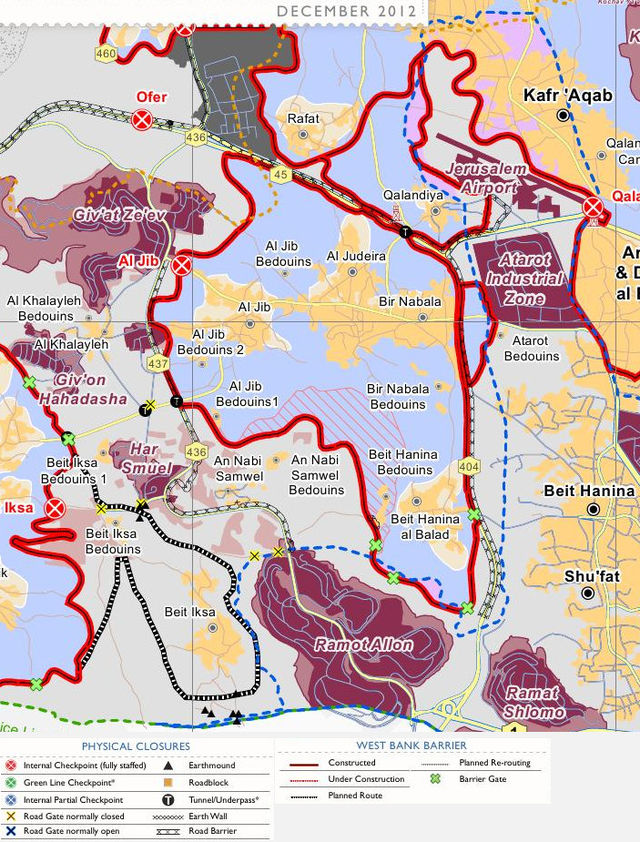Rafat, Jerusalem
Municipality type D in Jerusalem, State of Palestine From Wikipedia, the free encyclopedia
Municipality type D in Jerusalem, State of Palestine From Wikipedia, the free encyclopedia
Rafat (Arabic: رافات) is a Palestinian town, located approximately 4 km (2.5 mi) southwest of the city of Ramallah in the central West Bank in the northern Jerusalem Governorate. According to the Palestinian Central Bureau of Statistics, it had a population of 2,941 in 2017.[2] Its total land area consists of 3,773 dunams.
Rafat | |
|---|---|
| Arabic transcription(s) | |
| • Arabic | رافات |
 Rafat | |
Location of Rafat within Palestine | |
| Coordinates: 31°52′14″N 35°11′32″E | |
| Palestine grid | 168/141 |
| State | State of Palestine |
| Governorate | Jerusalem |
| Government | |
| • Type | Village council |
| Area | |
| • Total | 3,773 dunams (3.8 km2 or 1.5 sq mi) |
| Elevation | 753 m (2,470 ft) |
| Highest elevation | 800 m (2,600 ft) |
| Lowest elevation | 753 m (2,470 ft) |
| Population (2017) | |
| • Total | 2,941 |
| • Density | 770/km2 (2,000/sq mi) |
| Name meaning | from personal name [1] |
Rafat is located 10.9 km north-west of Jerusalem. It is bordered by Qalandiya to the east, Al Judeira to the north, Ramallah to the west, and Beituniya to the south.[3]
Ceramics from the Byzantine era have been found here.[4]
Rafat, like the rest of Palestine, was incorporated into the Ottoman Empire in 1517, and in the census of 1596, the village was noted in the Nahiya of Quds of the Liwa of Quds. The population was 27 households, all Muslim. The villagers paid a fixed tax rate of 33.3% on various agricultural products, such as wheat, barley, summer crops, goats and/or beehives, in addition to "occasional revenues"; a total of 3,300 akçe.[5][6]
In 1838, it was noted as a Muslim village in the Jerusalem District.[7][8][9] During this time, residents from Rafat settled Danyal near al-Ramla, establishing it as a dependency – or satellite village – of their home village.[10]
In 1863 Victor Guérin found Rafat to have one hundred and twenty inhabitants, and was located on a mound. It had mosque is dedicated to Sheikh Ahmed. He further noted that in some houses several stones looked of an ancient appearance. In one house he found a fragment of a broken column.[11]
An Ottoman village list from about 1870 showed that rafat had 35 houses and a population of 100, though the population count included men, only.[12][13]
In 1883, the PEF's Survey of Western Palestine (SWP) described Rafat as: "a small hamlet on a ridge, with a spring to the west, and many rock cut tombs."[14]
In 1896 the population of Rafat was estimated to be about 195 persons.[15]

In the 1922 census of Palestine conducted by the British Mandate authorities, Rafat had a population of 219 Muslims,[16] while according to the 1931 census Rafat had a population of 218 inhabitants, in 46 houses.[17]
In the 1945 statistics, Rafat had a population of 280 Muslims,[18] and a land area of 3,777 dunams.[19] Of this, 252 dunams were designated for plantations and irrigable land, 1,965 dunams were for cereals,[20] while 21 dunams were built-up.[21]
In the wake of the 1948 Arab–Israeli War, and after the 1949 Armistice Agreements, Rafat came under Jordanian rule.
In 1961, the population of Rafat was 504.[22]
After the Six-Day War in 1967, Rafat has been under Israeli occupation. The population in the 1967 census conducted by the Israeli authorities was 499x5, 75 of whom originated from the Israeli territory.[23]
According to ARIJ Israel has confiscated 287 dunums of land (8.5% of the total area of the village) for the construction of the Ofar military base. More lands have been confiscated from Rafat for the construction of the Israeli West Bank barrier. 637 dunums, which comprises 18.7% of the village’s total area, is isolated behind the wall, on the Israeli side.[24]
Seamless Wikipedia browsing. On steroids.
Every time you click a link to Wikipedia, Wiktionary or Wikiquote in your browser's search results, it will show the modern Wikiwand interface.
Wikiwand extension is a five stars, simple, with minimum permission required to keep your browsing private, safe and transparent.